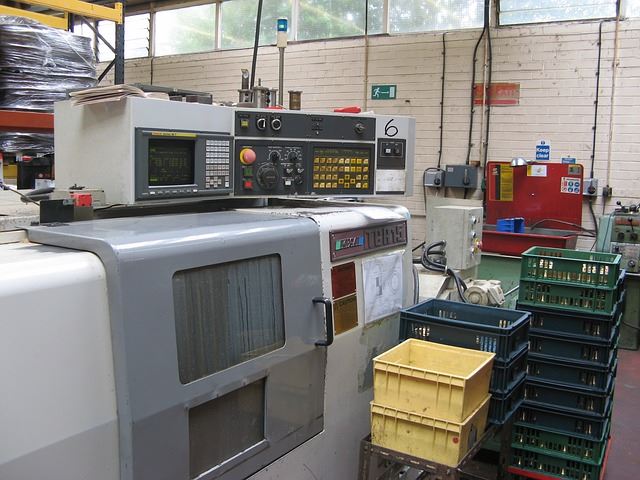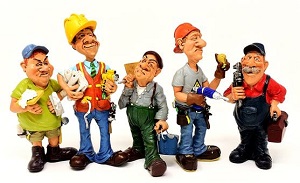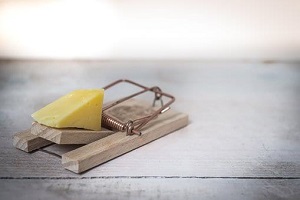4 Premises .gif)
- 4.1 Principle
- 4.2 Areas
- 4.3 Space
- 4.4 Flow
- 4.5 Floors
- 4.6 Toilet facilities
- 4.7 Lighting
- 4.8 Ventilation
- 4.9 Pipework
- 4.10 Cleaning
- 4.11 Maintenance
- 4.12 Consumables
- 4.13 Pest control
4.1 Principle
Product protection, cleaning, sanitization, maintenance, pests
.jpg)
The premises efficiently provide:
- the protection of the product
- maintenance, cleaning and sanitization
- reduction the risk of mix-up of:
- products
- raw materials
- ingredients
- packaging items
- containers
- consumables
Decisions on the design of the premises take into account the type of cosmetic product manufactured, the existing environment, and the cleaning and sanitization methods used.
4.2 Areas
.jpg)
4.3 Space

Necessary and preferably separate space is provided for all activities related to the cosmetic product such as:
- receipt
- sampling
- quarantine
- storage in reception
- measurement and weighing in production
- distribution
- transformation
- storage of bulk products
- laboratory
- packaging
- inspection
- storage of finished products
- maintenance
- shipment
4.4 Flow
.jpg)
4.5 Floors
.jpg)
The floors, walls, ceilings and windows of the production rooms facilitate cleaning and sanitization to keep them clean and in good repair.
When ventilation is adequate the windows do not open. If the windows do open a screen is put in place.
New constructions allow efficient cleaning and maintenance. It is preferable to use smooth surfaces that are resistant to the corrosive action of cleaning and sanitizing agents.
4.6 Toilet facilities
.jpg)
4.7 Lighting
.jpg)
4.8 Ventilation
.jpg)
4.9 Pipework
.jpg)
Pipework, drains and ducts do not permit the contamination of materials, productsany outcome of a process or activity (see also ISO 9000, 3.4.2), surfaces and equipment by leakage or condensation.
Drainage lines are kept clean and are sloped sufficiently to prevent back flow.
When designing consider:
- avoid exposed overhead roof beams, pipes and ducts
- keep exposed pipes away from walls to allow for cleaning
- in all circumstances protect the product
4.10 Cleaning
.jpg)
Premises for receiving, production, inspection, storage and dispatch activities are regularly maintained in a clean condition to protect cosmetic products. Cleaning and sanitizing agents are specified and effective. Cleaning and sanitizing programs for each area are established and adhered to. .gif)
The processactivities which transform inputs into outputs (see also ISO 9000, 3.4.1) "Clean and sanitize premises and equipment" describes the activities related to the cleaning and sanitization of premises and equipment..jpg)
In order to avoid contamination, cleaning methods such as vacuuming and wet wiping are preferred over compressed air or brushes.
4.11 Maintenance

.gif)
4.12 Consumables
.jpg)
4.13 Pest control

Premises for receiving, production, inspection, storage and shipment activities are designed, constructed and maintained to limit the access of insects and pests. A cleaning and checking program is established and regularly monitored. Measures are taken to ensure that pests are not allowed to enter the premises.
.gif)
- all areas are segregated, ventilated and adequately lit
- the cleaning program is applied and followed
- consumables for hand washing and room cleaning are appropriate
- the temperature of the raw material storage room is continuously monitored
- the pest control system is effective
- the production premises are not suitable (not enough space)
- the lighting in some production areas is not strong enough (intense) and cannot be moved to a specific location
- the storage premises are poorly maintained
- there is no separation between the production and storage areas for finished products
- the identification of certain areas is not carried out
- the frequency of cleaning of some premises is not adapted to the product
- the pest protection program does not include regular cleaning
- the floor material is not suitable for easy cleaning
- the one way flow of the product is not carried out (danger of contamination)
- the layout of the premises does not favor meeting staff hygiene rules
- ventilation in the weighing area is not sufficient
The rest of the T 23v07 ISO 22716 readiness version 2007 training is accessible on this page.
See also the training T 43v07 Interal audit ISO 22716 and the training package ISO 22716.
